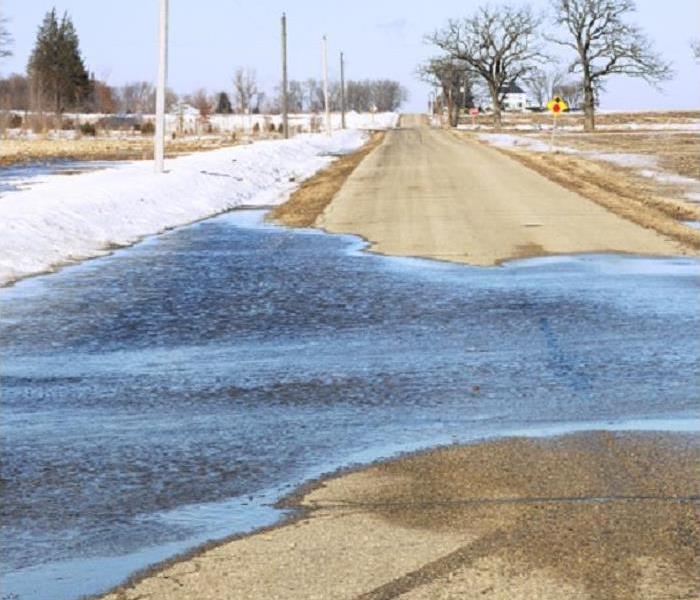Snowmelt, Spring Storms, and Flooding in Bourbonnais
4/18/2019 (Permalink)
Flood Removal Experts In Bourbonnais Talk About Problems Associated With Spring Storms
Whenever a spring storm strikes the Bourbonnais area, heavy rain or snow is possible. If high amounts of precipitation occur, you may find yourself needing to call in a professional flood removal company such as SERVPRO. During the spring, it is possible to see snow storms that bring in significant amounts of wet, heavy snow. Once the snow melts when the sun comes back out, moisture melting off of it can find its way into your home. Sometimes the snow melt can work its way slowly into your Bourbonnais home without you noticing it right away.
Even if no standing water is visible, your building materials and contents could have still retained moisture. Many times when our SERVPRO team shows up at your flood removal project in Bourbonnais, all of the liquid water that was once present has soaked into your building materials and structural components. Once melted snow leaks into your house, it elevates the humidity level inside the structure which can cause issues throughout the building. The moisture can also saturate building materials such as your drywall or carpet and cause them to lose their structural integrity. Wet organic substances can become prime spots for future mold growth.
In situations where there is little or no liquid water present, our SERVPRO technicians begin the structural drying process immediately. We set up dehumidifiers and air movers to create an environment conducive for rapid evaporation and drying. When several of your building materials got saturated, we utilize more dehumidification to help pull moisture out of your structural components.
Refrigerant or LGR dehumidifiers work best for removing moisture from porous materials. Desiccant dehumidifiers are more forceful and used in more severe situations where moisture has soaked into solid, non-porous substances like concrete. Desiccant systems work by pulling wet air across a silica gel that attracts water molecules. The machine then heats the gel so that the moisture evaporates into a separate air stream which vents outside of the building.
If you ever notice wet building materials after a spring storm, call SERVPRO of (815) 935-0077 Kankakee County at any day of the week.
Read more about Bourbonnais here.





 24/7 Emergency Service
24/7 Emergency Service
